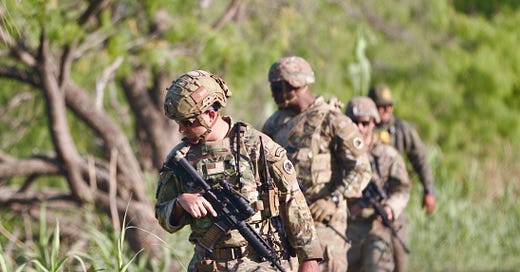Under Trump Military Expansion, Soldiers May Soon Police Civilians at the Border
The Trump administration is turning vast stretches of federal land into militarized “National Defense Areas.” Soldiers in these areas might soon begin undertaking civilian law enforcement duties.

More than 15 million people live in the U.S.-Mexico border region. In the coming months, many of those on the U.S. side of the border could find themselves living in federally militarized zones, or…
Keep reading with a 7-day free trial
Subscribe to The Border Chronicle to keep reading this post and get 7 days of free access to the full post archives.





